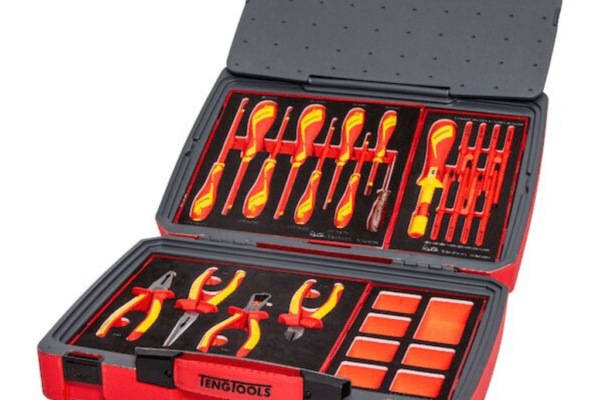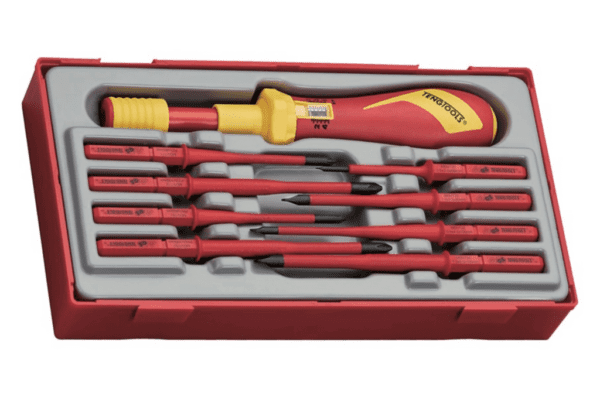December 28, 2023
Enhancing Worker Safety Tools: Emerging Trends and Innovations in Construction
In the constantly changing landscape of the construction industry, prioritizing the well-being of workers has never been more paramount. “Enhancing Worker Safety Tools: Emerging Trends and Innovations in Construction” offers a comprehensive look at the latest advancements designed to safeguard those who build our world. From cutting-edge wearable technologies to new-age materials that promise improved protection, this article explores how these pioneering solutions are setting strong foundations for safer construction sites. Join us in uncovering the innovative strides being made to ensure every worker returns home unscathed after a hard day’s work.
Understanding the Construction Safety Landscape
Current State of Construction Safety
As we explore the world of construction safety, it’s clear that the industry has come a long way over the years. Safety is no longer an afterthought; it’s a key aspect of every construction project we undertake. We’ve seen the implementation of rigorous safety standards and protocols aimed at reducing the number of accidents and fatalities on job sites. However, the nature of the work still presents inherent dangers that we continuously strive to mitigate.
Challenges in Construction Worker Safety
One of the main challenges in construction safety that we face is the ever-changing environment of a construction site. Each phase of construction brings new risks, and keeping up with these dynamic changes is a relentless task. Worker fatigue, communication breakdowns, and the proper use of equipment also add layers of complexity to maintaining a secure workplace. Our goal is to address these challenges head-on, ensuring that each of us makes it home safely at the end of the day.
Importance of Innovative Safety Measures
Innovative safety measures have become crucial in our quest to protect our team members’ well-being. We acknowledge that traditional methods may not suffice in addressing the diverse risks present within the construction landscape. Hence, we are always on the lookout for cutting-edge solutions to not only meet safety regulations but to exceed them, thereby fostering an environment of constant vigilance and care.
Wearable Technology for Construction Safety
Smart Helmets and Their Capabilities
We’ve seen smart helmets become game-changers on our construction sites. These helmets not only protect our heads from physical harm but also come equipped with features like augmented reality (AR) for viewing blueprints in real-time, communication tools, and the ability to respond to voice commands. They are enhancing our situational awareness while streamlining our work processes.
Biometric Monitoring Devices
Biometric monitoring devices, which some of us wear on our wrists or as part of our work attire, provide live health data that can be crucial. These devices monitor our vital signs, such as heart rate and body temperature, alerting us to signs of fatigue or heat stress. Such advanced warning systems are integral in preventing health-related incidents before they occur.
Advancements in Smart Safety Vests
Smart safety vests are another innovation we’re excited about. These vests do more than increase our visibility; they can also integrate sensors that detect environmental hazards such as toxic gases or extreme temperatures and alert us accordingly. Some even have GPS tracking and fall detection, ensuring swift response in case of an accident.
Drones and Aerial Surveillance
Improving Site Surveying and Mapping
Drones, with their aerial surveillance capabilities, have vastly improved our site surveying and mapping procedures. They offer us a bird’s eye view, enabling us to carry out inspections and surveillance in hard-to-reach areas without putting any of us in harm’s way. The detailed data and imagery we collect assist in better planning and safer execution of our work.
Monitoring Worker Movements and Safety Compliance
We use drones to monitor our movements across the site, ensuring we are all complying with safety protocols. By keeping a watchful eye from above, drones help us identify potential safety issues or non-compliance in real-time, allowing us to address these issues promptly and maintain a safe working environment for everyone.
Emergency Response and Disaster Management Applications
In the face of an emergency or disaster, drones provide us with critical applications that can make a difference between life and death. These UAVs can quickly assess damage, locate injured workers, and navigate through dangerous conditions to deliver essential supplies. We view them as indispensable tools for emergency response and disaster management.
Innovations in Safety Training
Virtual Reality (VR) Safety Simulations
Virtual reality has revolutionized the way we train for safety. VR simulators offer us immersive experiences that replicate the dangers of a construction site without the actual risk. This technology helps us practice our response to emergencies, recognizing hazards, and safe equipment operation, thereby ingraining safety procedures through realistic, hands-on practice.
Augmented Reality (AR) for On-Site Training
Augmented reality is another technology we utilize for on-site training. Through AR glasses or mobile devices, we can overlay instructional information onto the real world, assisting with machine repairs or identifying hazards. This on-the-spot guidance helps us learn and apply best practices within the context of the actual tasks we are performing.
E-learning and Mobile Training Applications
Our commitment to safety doesn’t end at the physical job site. E-learning and mobile training applications allow us to access vital training materials anytime, anywhere. These resources are not only convenient but also ensure that all of us have the latest information and training to maintain a safe working environment.
Data Analytics and Worker Safety
Predictive Risk Management Tools
Predictive risk management tools harness the power of data analytics to foresee potential hazards before they materialize. We take advantage of these tools to analyze past incidents and near-misses, and to spot trends that could indicate future risks. This proactive approach helps us stay several steps ahead in ensuring our collective safety.
Analyzing Safety Data for Preventative Measures
By meticulously analyzing safety data from numerous sources, we identify areas where preventative measures can make a significant impact. This data-driven strategy enables us to tailor our safety protocols and training to address specific vulnerabilities, enhancing our overall safety landscape.
Leveraging Big Data to Enhance Safety Protocols
Big data is a vital component in our safety arsenal. We leverage vast amounts of information to refine our safety protocols, ensuring they are not just comprehensive but also effective and efficient. Big data analytics lead us to identify hidden patterns and insights that are invaluable for cultivating a safer work environment.
Robotic Solutions for Hazardous Tasks
Robot-Assisted Construction and Demolition
We utilize robot-assisted solutions for construction and demolition tasks that are too dangerous for human workers. These robots can work in hazardous conditions, reducing our exposure to risks and increasing the accuracy and speed of these operations. Their integration supports our well-being and advances our work.
Exoskeletons for Injury Prevention
Exoskeletons are mechanical suits that we wear to prevent injuries while performing physically demanding tasks. These devices provide us with additional strength and support, minimizing strain and reducing the risk of musculoskeletal disorders. They have become a crucial component in our safety gear, especially for tasks that require heavy lifting or repetitive motions.
Automated Machinery for High-Risk Operations
Automated machinery is increasingly integral to performing high-risk operations. By utilizing remote-controlled or autonomous equipment, we minimize the need for direct human interaction in potentially dangerous situations. These machines ensure that we can maintain productivity while prioritizing our safety.
Improving Personal Protective Equipment (PPE)
Developments in PPE Material Technology
The materials used in our PPE are undergoing constant development to enhance their protective qualities. Lightweight yet stronger materials are being developed to offer better protection without compromising on comfort—because we know that the more comfortable our gear, the more likely we are to wear it correctly and consistently.
Smart PPE Integration with IoT
We’re witnessing an exciting shift in PPE with the integration of the Internet of Things (IoT). Smart PPE connects to the internet, allowing for real-time monitoring of our exposure to environmental hazards, providing alerts and improving traceability. This connectivity not only fosters a safer work environment but also enables a more informed response to incidents.
Customization and Fit Improvements
We understand that one size does not fit all when it comes to PPE. Customization and fit improvements are crucial for effectiveness and wearability. Advances in ergonomic design and adjustable features ensure that our gear fits us better, maximizes protection, and allows for ease of movement while we work.
Enhanced Communication Tools for Safety
Real-Time Communication Devices
Real-time communication devices are a cornerstone in our safety communication. Whether it’s two-way radios, hands-free communication systems, or smart watches, instant communication ensures that we can alert one another to potential dangers or coordinate effectively in case of an emergency.
Emergency Alert Systems for Workers
We hold emergency alert systems in high regard as they can be lifesavers in critical situations. These systems can provide us with immediate notifications about evacuations, severe weather, or other urgent situations, allowing for a swift and organized response that ensures our safety.
Centralized Safety Information Platforms
centralized safety information platforms serve as a repository for all our safety-related information and communication. Accessible by every team member, these platforms ensure that crucial safety updates, guidelines, and reports are disseminated efficiently, keeping us all on the same page when it comes to safety matters.
Safety Management Software Advancements
Compliance Tracking and Management Systems
The compliance tracking and management systems we employ simplify the complex process of adhering to safety standards and regulations. They streamline the collection, organization, and analysis of compliance data, making it easier for us to identify areas that require attention and take immediate action to remedy any issues.
Site Safety Planning and Analysis
We utilize software specially designed for site safety planning and analysis, giving us a comprehensive overview of our projects. These tools help us in preparing safety plans, conducting hazard analyses, and revising our safety strategies based on site-specific data.
Incident Reporting and Investigation Tools
When accidents happen, our response and investigation can significantly affect future prevention efforts. Modern incident reporting and investigation tools enable us to quickly document incidents, analyze contributing factors, and share findings with the entire team. These insights drive the continuous improvement of our safety practices.
Future Perspectives in Construction Safety Tools
The Role of Artificial Intelligence in Construction Safety
Looking ahead, we see artificial intelligence (AI) playing a pivotal role in our safety strategies. AI can process vast amounts of data to identify trends and predict risks, potentially preventing accidents before they occur. We’re optimistic about employing AI to enhance our safety standards and response capabilities.
Long-term Impact of Wearables and Smart Equipment
The long-term impact of wearables and smart equipment has yet to be fully realized, but we’re already observing positive trends in their adoption. As technology evolves, so will the capabilities of these tools, leading to even higher safety standards and fewer accidents on the job.
Anticipating Future Safety Challenges and Solutions
As we move forward, we keep a vigilant eye on potential future safety challenges that could arise due to new construction methods, materials, and technologies. We’re committed to continuously exploring innovative solutions that will safeguard us against the risks of tomorrow, ensuring that our safety record is not only maintained but consistently enhanced as we build for the future.



























